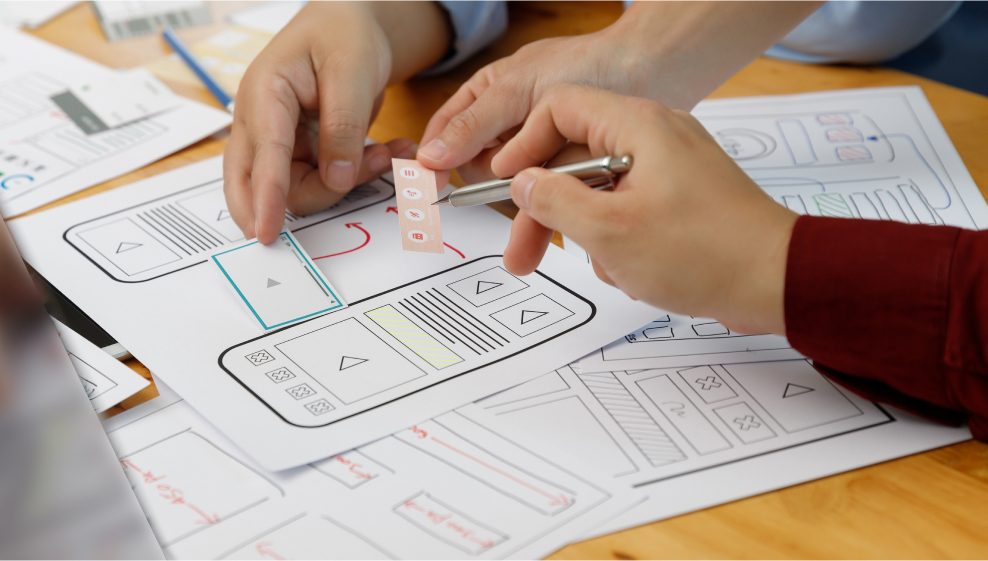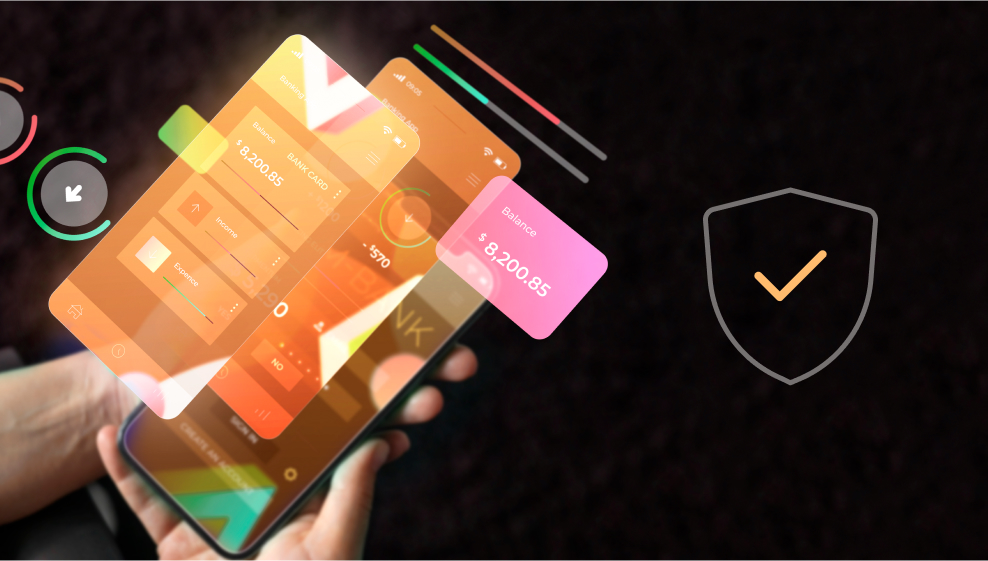Before You Build: A Guide to App Development
You wouldn’t bake a cake without knowing the recipe, so why build an app without a plan?
21 July, 2025
Before You Build: A Guide to App Development
Before you even start wondering how to find the perfect outsourcing company to build your app, ask yourself a more important question:
Do you know what exactly you’re building and why anyone should care?
It might sound harsh, but most failed apps didn’t flop because of bad developers or buggy code. They failed because the idea wasn’t validated, the problem wasn’t clear, or the team jumped into development way too early.
At BandaPixels, we’ve worked with dozens of startups and product teams, and if there’s one thing we’ve learned, it’s this: rushing into development without proper prep is like building a house without a foundation.
So here’s a detailed (but not overwhelming) breakdown of what steps are worth taking before and during development, especially if you want your app to be something people actually use.
1. Do the Research: Market First, Not Code
Before you even think about UI or features, you need to understand two things:
- Who are you building this for?
- What problem are you solving?
This means researching your users, their behavior, frustrations, goals, and the tools they currently use (and often hate). Go beyond assumptions. Talk to real people, run surveys, dig into user forums or Reddit threads, read reviews of similar apps.
If this feels like a lot, it is – but here’s the good news:
You can (and should) do this with a good product designer.
A senior designer isn’t just someone who picks colors. A good one will help you analyze the market, map user journeys, and align your product vision with real-world needs.
2. Look at Your Competitors — Not to Copy, But to Learn

Don’t reinvent the wheel blindly.
Check what others in your space are doing, and more importantly, what they’re not doing well.
- Where are they falling short?
- What are users complaining about in the reviews?
- What’s working in terms of UI/UX?
- How do they onboard users?
Understanding your competition helps you position yourself better. Not just as another clone, but as the smarter choice.
3. Define What You’re Actually Building (And What Makes It Different)
This is where a lot of founders get stuck – trying to explain their app without a clear value proposition (one sentence that defines what your app is, who it’s for, and why it matters).
Take time to write this out:
- What’s the core problem you’re solving?
- Why is your approach better, easier, cheaper, or more relevant?
- What makes you different from the rest?
If you can’t explain your product in one sentence, you’re probably not ready to build it yet.
4. List Out Your Features — But Not All at Once
Once you understand your users and your space, you can start shaping your product.
It’s tempting to jump straight into “what your app should do.” But this only makes sense once you understand the why behind every feature.
Here’s a smart way to approach features:
- Start with the ones that will make you stand out (your unique value)
- Then list the absolute essentials (what’s required for the app to function)
- Leave the nice-to-haves for later
This helps you build a focused MVP instead of a monster that never gets released.
5. Bring in a Designer Early — Not Just for the “Look”
Design is not just about how your app looks.
It’s about how it works, how intuitive it feels, and how users move through it.
A senior designer will:
- Build user personas and journeys
- Map out user flows for your core tasks
- Design wireframes and clickable prototypes (with a clickable Figma prototype, you can show your product to potential users, get early feedback, spot major UX issues, and avoid wasting time building the wrong thing).
- Create your brand’s visual identity (colors, typography, logo)
- Test ideas early, before any code is written
This is where ideas start feeling real and where a lot of mistakes get caught before they become expensive.
6. Collect Offers — And Compare What’s Under the Hood

Once you know what you’re building, start talking to development teams.
Get multiple offers, and don’t just look at the price tag, ask what’s included:
- Do they offer discovery sessions?
- How do they handle communication and scope changes?
- What’s their QA process like?
- Will they help choose the right stack or just go with whatever’s trendy?
A slightly more expensive partner who offers real product thinking is usually cheaper in the long run.
7. Choose the Right Tech Stack — Not the Trendiest One
Now let’s talk development.
One of the most common (and expensive) mistakes is choosing a tech stack that’s too heavy or complex for what you’re actually building.
Instead your tech stack should be dictated by:
- The type of application you’re building
- The features you’ve prioritized
- Your budget and long-term goals
For example:
If your app doesn’t involve AI or automation, you probably don’t need a Python backend.
If you’re building a content-based website, WordPress might be totally fine.
If you’re launching a marketplace or dashboard, React, Node.js, or Laravel may be more appropriate.
The tech stack should match your needs, not your wishlist.
It should also fit your budget. Always make sure your outsourcing partner proposes a stack that’s not just scalable but also reasonable and maintainable for your business. Don’t overengineer things just because you saw someone on Twitter use Kubernetes for their to-do list app.
8. Start Development (The Right Way)
Now — finally — it’s time to build.
This should happen in phases, with regular check-ins and testing:
- Backend and frontend are built in sync with the designs
- QA ensures nothing breaks as features are added
- Feedback from real users keeps shaping future iterations
You’re not just launching an app, you’re building a living product.
9. Don’t Forget Security

This is a big one and it often gets pushed to “later.”
Please don’t wait until launch to think about app security.
The earlier you integrate security into your planning, the easier (and cheaper) it is to build a stable product. That means:
- Handling user data properly from day one
- Using secure authentication methods (no plain text passwords, please)
- Choosing frameworks with proven security practices
- Following GDPR or local data protection laws (especially in the EU)
- Making sure third-party tools you integrate are trustworthy
- Setting clear roles and access levels for your admin panel
If you’re working with an outsourcing company, ask them how they handle security. A good one will be able to walk you through the protections they build in from the start, not something they “add later.”
And if you’re dealing with sensitive user data ( medical, financial, or personal) security shouldn’t be a checkbox. It should be part of the strategy.
10. Launch, Learn, Improve
Once you launch, your job isn’t done. It’s just beginning.
- Track how people use the app
- Collect real data
- See what works, what confuses users, and what no one touches
- Use that insight to plan updates, fix bugs, and expand smartly
- Keep performance and security in check
The best apps are not perfect at launch. They evolve.
Ideally, you keep working with a team that understands your product deeply, not just one that delivered code and disappeared.
Final Thoughts
You don’t need a massive team or unlimited budget to build a great product.
It is the result of thoughtful preparation, honest user understanding, and strong collaboration between strategy, design, and tech.
If you’re serious about building an app, don’t start with code. Start with clarity.
Still unsure where to begin?
Book a free consultation and we’ll walk you through the entire process step by step.
Let’s build something that actually solves real problems and makes users come back for more.
Let's work together to make your project a success
Contact usLast News
Thank you!
We’ve received your contact request and will contact you soon
Something went wrong
We couldn’t receive your contact request. Please try again later.